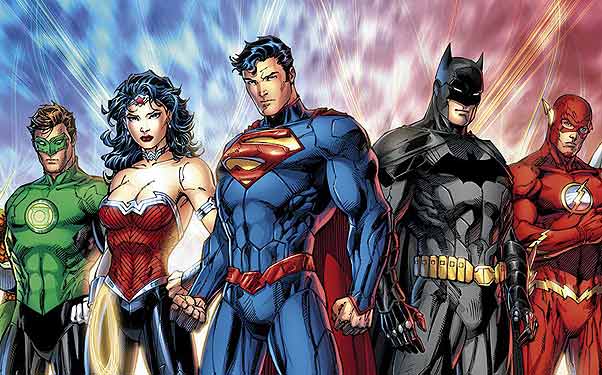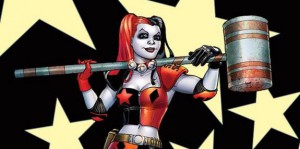Welcome to the new column “Comics Issues” where two Sound on Sight writers debate a important or controversial comics industry topic. First up, we discuss whether the DC New 52 was a successful initiative or not. Feel free to post your opinion in the comments below.

Overall, I think the New 52 was a successful initiative for DC Comics. The new #1’s attracted a lot of new readers (including yours truly) and made titles like Action Comics and Batman, which seemed inaccessible with issue numbers in the three digits. Speaking of Batman, the New 52 has been a time of creative renaissance for the character and his family of titles from Scott Snyder and Greg Capullo’s soon to be legendary run on the title to artistically interesting books like Gotham Academy and Grayson. Other highlights of the New 52, include Grant Morrison’s metafictional event comic Multiversity and a variety of quirky books in a variety of genres, including Western, high fantasy, and horror. Even if these books were cancelled after several issues, the New 52 should be applauded for taking risks on non-superhero books while also integrating characters from Vertigo and Wildstorm.
This might sound dramatic, but without the New 52, I wouldn’t be writing this article. Before the New 52, I only read Marvel books and had read a few DC classics, like Batman Year One, Superman Red Son, and Kingdom Come. I didn’t read any comics monthly. However, with the New 52, I could start at #1 in a new universe without knowing much about the non-Batman side of the DC Universe and jump right in. As I’ll discuss later, Batman instantly caught my eyes with Greg Capullo’s grimy, gorgeous art and Scott Snyder’s eloquent writing style. Plus they nailed the important last page cliffhanger. I also read books like Aquaman, which made me never joke about the character ever again and enjoyed the pulpy action of Suicide Squad and the rich mythos of Demon Knights even if I had no idea who the hell Etrigan was.
Art and storywise, the Batman family of titles have been the most consistent in the New 52 under the 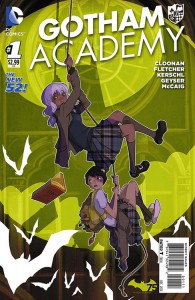 editorial oversight of Mike Marts and currently Mark Doyle. Gotham City is home to a plethora of art style and voices. It’s a place where Greg Capullo’s heavily inked, horror influenced pencils can coexist with Karl Kerschl’s Studio Ghibli-esque vistas in Gotham Academy and the kinetic action and fabulous designs of Babs Tarr’s Batgirl work. The creative teams aren’t afraid to take risks as Gail Simone brought back Barbara Gordon as Batgirl, Peter Tomasi resurrected Damian Wayne in an emotionally rending manner, and Scott Snyder and Greg Capullo created the Court of Owls, the most frightening Bat-villain years.
editorial oversight of Mike Marts and currently Mark Doyle. Gotham City is home to a plethora of art style and voices. It’s a place where Greg Capullo’s heavily inked, horror influenced pencils can coexist with Karl Kerschl’s Studio Ghibli-esque vistas in Gotham Academy and the kinetic action and fabulous designs of Babs Tarr’s Batgirl work. The creative teams aren’t afraid to take risks as Gail Simone brought back Barbara Gordon as Batgirl, Peter Tomasi resurrected Damian Wayne in an emotionally rending manner, and Scott Snyder and Greg Capullo created the Court of Owls, the most frightening Bat-villain years.
Then, there is Jimmy Palmiotti, Amanda Conner, and Chad Hardin’s Harley Quinn book, which has been a huge commercial success (sometimes outselling Justice League) and just plain fun with Harley getting into a variety of hijinks, including teaming up with a wisecracking, Yiddish cyborg, playing roller derby, and even teaming up with Power Girl in another dimension. It’s the funniest of the New 52 titles filled with cartoonish violence and double entendres showing that the Bat-books don’t always have to be about depressing mysteries or endless battles with the Joker.
The comics of Grant Morrison have been the most creative (and occasionally incomprehensible) of the New 52. There was the conclusion of his Batman epic with the final volume of Batman Inc featuring a world-spanning battle between Batman Inc and the Talia al Ghul run Leviathan organization. There was also still time for his artist Chris Burnham to pen a Bat-Cow standalone issue. But the highlight of Morrison’s New 52 work was Multiversity, a true event comic with a variety of stories, including the mindblowing Pax Americana with Frank Quitely, which basically out-Alan Moored Alan Moore and showed how formally constrained Watchmen was. There was also Multiversity: The Just featuring the children of the original Justice League as spoiled celebrities, Thunderworld (a Golden Age influenced take on Captain Marvel), and several others set in the vast tapestry of the DC Multiverse with art from industry greats, like Ivan Reis, Jim Lee, and Doug Mahnke. And it was all held together by the clever device of the “cursed” comic book.

The New 52 has had a quite few bumps in the road with its revolving door of creators, lack of direction on the Justice League (and occasionally Superman) family of books, and overreliance on events. However, I think the initiative’s accessibility for new fans (like me 3 years ago), the continued storytelling triumphs of the Batman titles, the pure presence of Grant Morrison, and its stable of interesting, underdog books, like Demon Knights show that the New 52 was a success.
-Logan Dalton
 Con: “The DC Comics New 52 wasn’t successful.”
Con: “The DC Comics New 52 wasn’t successful.”
The New 52 was a bold, brave attempt by DC Comics to entice new readers, create increased long-term sales, and to produce innovative stories unique to their rebooted universe. Based upon this statement, the New 52 failed in all these points and more.
For several years, Marvel Comics had continually bested DC Comics in both market and dollar share in regards to sales. However, this changed dramatically with the line-wide relaunch in September 2011. Justice League #1 became the highest selling comic of 2011 as the lead issue of the whole reboot and helped lead DC to the top spot in sales for several months. Unfortunately this was short-lived and Marvel soon reclaimed its position as the best selling-comic book company in the United States, a position it has held with little worry for the last three years.
This temporary boon in sales is a result of the highly publicised event that attracted new readers on a short term basis, but failed to retain enough new fans to make any long lasting impact. DC focused marketing on their rebooted brand and host of number 1 issues that acted as easy jumping on points for new readers, whilst placing high profile and sometimes unusual names on many of their books. Grant Morrison was able to try his hand at Superman on Action Comics whilst Geoff Johns attempted to replicate the success he enjoyed on Green Lantern with a reboot of Aquaman and Justice League. This mix of revered comic 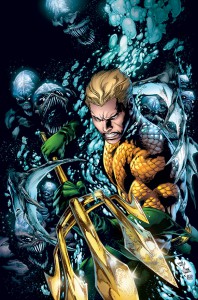 book creators and new number ones was an attempt to entice new and lapsed readers and to retain the existing fanbase. Unfortunately, the increased sales failed to last. For every new fan gained by the New 52, another left, resulting in very similar sales figures to those seen before the reboot.
book creators and new number ones was an attempt to entice new and lapsed readers and to retain the existing fanbase. Unfortunately, the increased sales failed to last. For every new fan gained by the New 52, another left, resulting in very similar sales figures to those seen before the reboot.
In order to maximise sales, DC experimented with several different genres and refused to limit their range of comics to superheroes, instead producing westerns and war comics. Unfortunately the business side of comic books resulted in many series getting cancelled quickly, sometimes within 8 issues. Blue Beetle, Hawk and Dove and Static Shock failed to maintain a long term run whilst less traditional fare such as Blackhawks and G.I. Combat also faded quickly, with DC quick to replace any failing series with a brand new title in order to continually produce 52 titles.
Continuity also became an issue for many fans as DC’s company wide reboot had areas of gray. The existing continuity for certain characters, namely Batman and Green Lantern (plus their supporting cast), remained intact. Except it didn’t.
Fan: So Green Lantern all happened?
DC: Yeah, so did all the Batman stuff, it just happened over 5 years. Don’t think about it too much.
Fan: So the Sinestro Corps War happened?
DC: Yeah, it did.
Fan: What about the part where an evil Superboy kills a good Superboy?
DC- Yeah, so that bit didn’t happen because those characters weren’t there at all. But everything else happened.
Fan- Okay, so nothing else changed in Green Lantern history?
DC- Not much, unless it interferes in any new idea we come up with. And Guy Gardner’s origin has changed. Don’t think about it too much.
 Considering the New 52 reboot was meant to open its arms to new readers with warm, inviting cups of cocoa and a pile of number one issues, the fact that some links to previously established continuity existed is a huge concern. Take Hal Jordan whose convoluted history involves being the greatest Green Lantern, becoming Parallax, dying, becoming the Spectre, being reborn, winning over his critics etc etc. Not exactly the easiest history to slot into a fresh reboot or for a new fan to understand and comprehend. Continuity is not just an issue for new readers as loyal fans were treated appallingly by the reboot. Character progression was wiped away for Booster Gold, whereas some characters were completely deleted, such as Wally West. Existing storylines also disappeared, such as the cliffhanger to Justice League: Generation Lost which saw the return of the villainous Maxwell Lord with a revived Justice League International team planning to bring him down.
Considering the New 52 reboot was meant to open its arms to new readers with warm, inviting cups of cocoa and a pile of number one issues, the fact that some links to previously established continuity existed is a huge concern. Take Hal Jordan whose convoluted history involves being the greatest Green Lantern, becoming Parallax, dying, becoming the Spectre, being reborn, winning over his critics etc etc. Not exactly the easiest history to slot into a fresh reboot or for a new fan to understand and comprehend. Continuity is not just an issue for new readers as loyal fans were treated appallingly by the reboot. Character progression was wiped away for Booster Gold, whereas some characters were completely deleted, such as Wally West. Existing storylines also disappeared, such as the cliffhanger to Justice League: Generation Lost which saw the return of the villainous Maxwell Lord with a revived Justice League International team planning to bring him down.
There have been some excellent stories produced during the New 52. The whole of Animal Man was a sublime story that mixed superheroics with a dark, horror undercurrent and contained astonishing artwork that captured the tone of the book perfectly. Other highlights include the Batman run by Snyder, Batwoman by J. H. Williams III (until he and co-writer Blackman left) and fantastic takes on The Flash and Wonder Woman in their eponymous books. The core Green Lantern titles also remained strong as they built to the end of Geoff John’s run. Unfortunately these strong titles just illustrate how unnecessary the New 52 was- all of these stories could have easily taken place in pre-New 52 continuity.
The next phase of the DC Comics Universe, Post-Convergence, will see the New 52 world remain. However,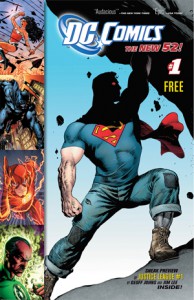 Dan Didio, Co-Publisher of DC, has stated ‘story will trump continuity’ which essentially means that whilst there will be an interconnected world writers will have more freedom to tell a better tale. In other words, continuity won’t be as important, which makes fans wonder whether the New 52 had an actual purpose. If the point of the New 52 was to end up at a moment when continuity didn’t matter, then why did the New 52 exist at all when DC could have just moved us to that moment?
Dan Didio, Co-Publisher of DC, has stated ‘story will trump continuity’ which essentially means that whilst there will be an interconnected world writers will have more freedom to tell a better tale. In other words, continuity won’t be as important, which makes fans wonder whether the New 52 had an actual purpose. If the point of the New 52 was to end up at a moment when continuity didn’t matter, then why did the New 52 exist at all when DC could have just moved us to that moment?
If the Post-Convergence world of a less strict interconnected universe was not the end goal, doesn’t this mean DC have thrown in the towel and conceded that the New 52 failed? The New 52 was a brave experiment that unfortunately failed to produce any long-lasting results in terms of sales and also split fans when it came to the actual story-telling, with mixed results. Whilst some reading this article may have read their first comic book as part of the 2011 reboot, far too many will be nodding along with all the points made here as they remember their confusion over continuity and anger over the disappearance of their favourite character. Although the universe of the New 52 will continue to exist (for now), the branding banner will disappear and the so-called strict continuity will not be as tightly adhered to. RIP New 52, you shan’t be missed.
-Brendan Bergmanski

